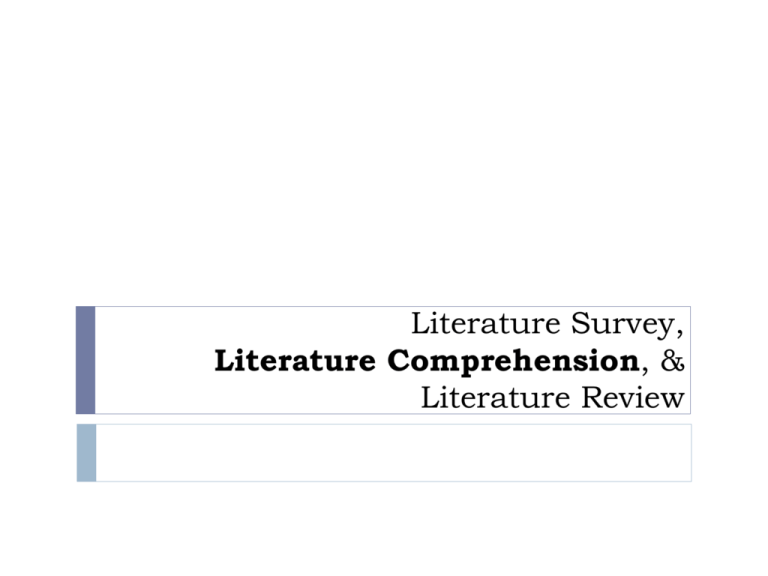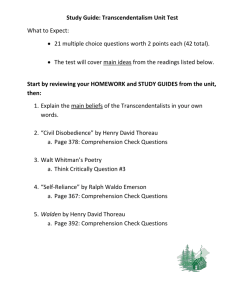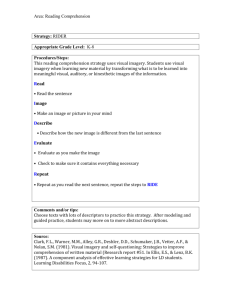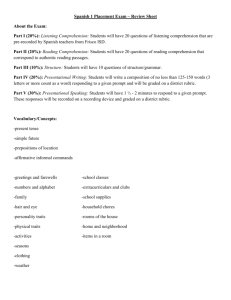What is research?
advertisement

Literature Survey, Literature Comprehension, & Literature Review Literature Comprehension Process of reading and understanding the research found in the survey process. The first thing to do is to organise your collected research based on sub-topics within your research Physical piles, folders, sections within your digital library Some papers might be about the overall themes and others might be about specific issues. Literature Comprehension Initially you will find this scary… You will be presented with lots of with new terminology, models and approaches. THIS IS PERFECTLY NORMAL Don’t get overwhelmed by it all Just read papers one by one and make a note of all new terms, models and approaches… You will soon start to see things coming together Literature Comprehension Don’t get overwhelmed by it all You are learning a new skill through practice The more papers you read, the less new terms you will be encountering, the more of an expert you will become. You are also adding to your keyword search list. The first few papers are the worst, once you are over that hurdle, you will find the rest much easier. Literature Comprehension Also don’t be afraid to ask for help – from your lecturer or supervisor or other people. Do you know what areas of research your lecturers are interested in ? Types of Reading Scanning Rapid, surface Gaining a general impression Receptive Collection Skimming Casting your eye over Looking for particular points Understanding ‘listening’ to the author Steady, easy pace Reflective Think carefully about what you are reading Analysis, Evaluation, Judgement Review Literature Comprehension Skim and scan in collection Active Reflective Reading in comprehension Don’t just skim read the material, but understand what you are reading, as you are reading it. It may be necessary to re-read a sentence, one phrase at a time, or one word at a time until the meaning is evident. It may be the case that you will have to consult some reference source to confirm the meaning of terminology, this being the case, it is only logical to keep reference material close to hand (textbooks, the internet, dictionaries, etc.) Literature Comprehension Make a note of any nice phrases used in the papers any interesting approaches to the experiments and any nice display of results. How to read a research paper? Your Objectives are to: Understand the problem discussed Understand the proposed solution proposed Understand competing approaches / designs that could have been used Evaluate the paper in terms of The area you are looking at Your work in particular SQ3R Technique Survey Question If you think it is relevant to your work Recall What questions would you like the text to answer? Read Get the general idea Try to recall the main points after reading (and record) Review To confirm you have understood and collected the main points Survey (scan and skim) Try to identify if this is relevant to your work Look at Title Table of contents Keywords Abstract Introduction And conclusion First and last paragraphs of various sections Look for keywords in text Bibliography Based on this decide if you want to proceed Question Read actively Try to relate to Experience Other work Your thinking Formulate questions you think the text will/should answer Read Connect To your work Other work Your experience Take notes Break large texts into smaller more manageable chunks and read as separate texts E.g. Literature Experiment Conclusions Recall and Review After each reading Write a short paragraph (one-three sentences) summarising what you have read Write a short paragraph (one-three sentences) about what you think this signals for your work (can be combined) The Three Pass Approach – First Pass Objective: To decide if the paper is worth a reflective read Aim for 5-10 mins Quick scan to get a quick overview Read the title, abstract, and introduction Read the section and sub-section headings 1. 2. 3. 4. 5. 6. (but not the content of sections) Look at the diagrams and tables to see architectures used or results produced Read the conclusions Take a quick look at the references, look for those you have already read and those that could be of interest Outcome: Decision on whether paper is worth a second pass The Three Pass Approach – First Pass After first pass should be able to decide the following: Category: Context: Where does it fit with what you have already read? Which other papers is it related to? What tools were used? Contributions: What type of paper is it? A review? A proposal for an approach? A report of experimentation? A description of a prototype? A critical comparison? What are the paper's main contributions? Clarity: Is the paper well written? The Three Pass Approach – Second Pass Objective: To understand the paper and the evidence used Aim for 30-40 mins Make notes Identify questions you would have for the author 1. 2. 3. 4. 5. 6. This will help you refine your research question What evidence is being used and how? How is it evaluated? Any references you haven’t read and how they are being used Write a short paragraph outlining main focus of paper and evidence to support this Outcome: Decide to discard the paper Decide to return to it later after you have read some more Proceed to phase 3 The Three Pass Approach – Third Pass Objective: To get a detailed understanding of the work described in the paper 1. 2. 3. 4. 5. 6. 7. 8. 9. Try to identify assumptions Challenge statements made Follow the evidence Is the evaluation suitable ? Similar to other work Strengths and weaknesses What’s missing? Have you a different view? Make notes Create a set of paragraphs summarising your reflections Outcome: Likely contribution to your literature review Maybe even start of a section Why take notes? To summarise To remember To concentrate To make connections To use later To avoid plagiarism Literature Comprehension To help you in this process, use the article review checksheet with questions you should consider after reading a paper: http://www.comp.dit.ie/dgordon/CheckSheets/ScienceArticleCheckSheet.doc Useful Shorthand Abreviations e.g. i.e. n.b. > < = -> => ibid Meaning For example That is – in other words Note well More than Less than Same as Leads to Implies In the same work Types of note Pattern notes Linear/Hierarchical notes Mindmaps Spider diagrams Headings, sub-headings Numbering, indentation For all Colour coding Literature Comprehension Literature Map You are going to have to put some structure on the literature, one suggestion is to create a literature map. Write the title of your research on top, and the main topics relevant to your research underneath, now associate the papers you are reading with each of the topics. Literature Map Literature Map






